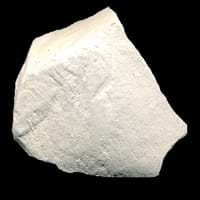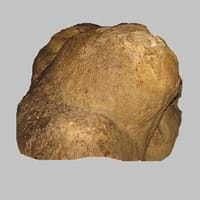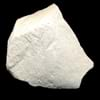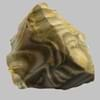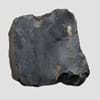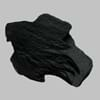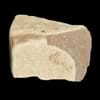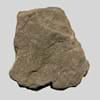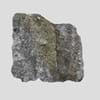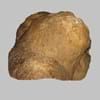Definition
Chalk is a soft, white, powdery limestone consisting mainly of fossil shells of foraminifers
Travertine is a mineral consisting of layered calcium carbonate formed by deposition from spring waters
Discoverer
Unknown
Marcus Vitruvius Pollio
Etymology
From old English cealc chalk, lime, plaster; pebble, from Greek khalix small pebble, in English transferred to the opaque, white, soft limestone
From Italian travertino a kind of building stone, from Tiburs, adjective from Tibur (Tivoli), in Italy
Class
Sedimentary Rocks
Sedimentary Rocks
Sub-Class
Durable Rock, Soft Rock
Durable Rock, Medium Hardness Rock
Group
Not Applicable
Not Applicable
Other Categories
Fine Grained Rock, Opaque Rock
Fine Grained Rock, Opaque Rock
Texture
Clastic or Non-Clastic
Banded
Color
Grey, White, Yellow
Beige, Black, Blue, Brown, Grey, Red, White, Yellow
Durability
Durable
Durable
Interior Uses
Decorative Aggregates, Homes, Interior Decoration
Decorative Aggregates, Entryways, Flooring, Homes, Interior Decoration
Exterior Uses
As Building Stone, As Facing Stone, Paving Stone, Garden Decoration
As Building Stone, As Facing Stone, Paving Stone, Garden Decoration, Office Buildings
Other Architectural Uses
Powder
Curbing
Construction Industry
As Dimension Stone, Cement Manufacture, Construction Aggregate, for Road Aggregate, Making natural cement, raw material for manufacture of quicklime and slaked lime, Source of calcium
As Dimension Stone, Building houses or walls, Cement Manufacture, Construction Aggregate, for Road Aggregate, Raw material for the manufacture of mortar
Medical Industry
Not Yet Used
Not Yet Used
Antiquity Uses
Artifacts, Monuments, Sculpture, Small Figurines
Artifacts, Jewellery, Monuments, Sculpture, Small Figurines
Commercial Uses
Alumina Refineries, Creating Artwork, Drawing on blackboards, Gymnasts, athletes and mountain climbers use for grip, In aquifers, Paper Industry, Production of Lime, Raw material for manufacture of quicklime, slaked lime, Soil Conditioner, Whiting, Whiting material in toothpaste, paint and paper
Cemetery Markers, Creating Artwork, Gemstone, Jewelry, Paper Industry, Pottery
Types
Not Available
Not Available
Features
Clasts are smooth to touch, Is one of the oldest rock, Smooth to touch, Very fine grained rock
Stalactites and stalagmites are formed from this rock, Surfaces are often shiny, Very fine grained rock
Archaeological Significance
Famous Monuments
Data Not Available
Colosseum in Rome, Italy, Sacré Coeur in Paris, France, Trevi Fountain in Rome, Italy
Famous Sculptures
Data Not Available
Data Not Available
Formation
Chalk is formed from lime mud, which accumulates on the sea floor which is then transformed into rock by geological processes.
Travertine is a type of sedimentary rock formed when a river carries or transports pieces of broken rock which then undergo sedimentation. They are then subjected to high temperature and pressure hence forming travertine rock.
Mineral Content
Calcite, Clay, Clay Minerals, Quartz, Sand
Calcite, Clay, Feldspar, Micas, Quartz
Compound Content
Ca, NaCl, CaO
Ca, NaCl, CaO, Oxygen
Types of Metamorphism
Not Applicable
Not Applicable
Types of Weathering
Biological Weathering, Chemical Weathering
Biological Weathering, Chemical Weathering, Mechanical Weathering
Types of Erosion
Chemical Erosion, Coastal Erosion, Water Erosion
Chemical Erosion, Coastal Erosion, Glacier Erosion
Grain Size
Very fine-grained
Fine Grained
Fracture
Not Available
Splintery
Porosity
Highly Porous
Highly Porous
Luster
Dull
Dull to Pearly
Compressive Strength
Not Available
Cleavage
Non-Existent
Non-Existent
Specific Gravity
2.3-2.4
1.68
Transparency
Opaque
Opaque
Density
2.49-2.50 g/cm3
2.71 g/cm3
Resistance
Heat Resistant
Impact Resistant, Pressure Resistant, Wear Resistant
Deposits in Eastern Continents
Asia
Brunei, India, Indonesia, Malaysia, Singapore, Thailand, Vietnam
China, Russia
Africa
Cameroon, Chad, Ghana, Kenya, Malawi, Sudan, Tanzania, Togo, Zambia, Zimbabwe
Not Yet Found
Europe
England, France, Germany, Spain, United Kingdom
Austria, Italy, Portugal, United Kingdom
Others
Not Yet Found
Not Yet Found
Deposits in Western Continents
North America
Canada, USA
Canada, USA
South America
Colombia
Argentina, Bolivia, Ecuador
Deposits in Oceania Continent
Australia
Adelaide, New Zealand, Queensland, Tonga, Victoria, Yorke Peninsula
Not Yet Found
All about Chalk and Travertine Properties
Know all about Chalk and Travertine properties here. All properties of rocks are important as they define the type of rock and its application. Chalk and Travertine belong to Sedimentary Rocks.Texture of Chalk is Clastic or Non-Clastic whereas that of Travertine is Banded. Chalk appears Soft and Travertine appears Fibrous. The luster of Chalk is dull while that of Travertine is dull to pearly. Chalk is available in grey, white, yellow colors whereas Travertine is available in beige, black, blue, brown, grey, red, white, yellow colors. The commercial uses of Chalk are alumina refineries, creating artwork, drawing on blackboards, gymnasts, athletes and mountain climbers use for grip, in aquifers, paper industry, production of lime, raw material for manufacture of quicklime, slaked lime, soil conditioner, whiting, whiting material in toothpaste, paint and paper and that of Travertine are cemetery markers, creating artwork, gemstone, jewelry, paper industry, pottery.
